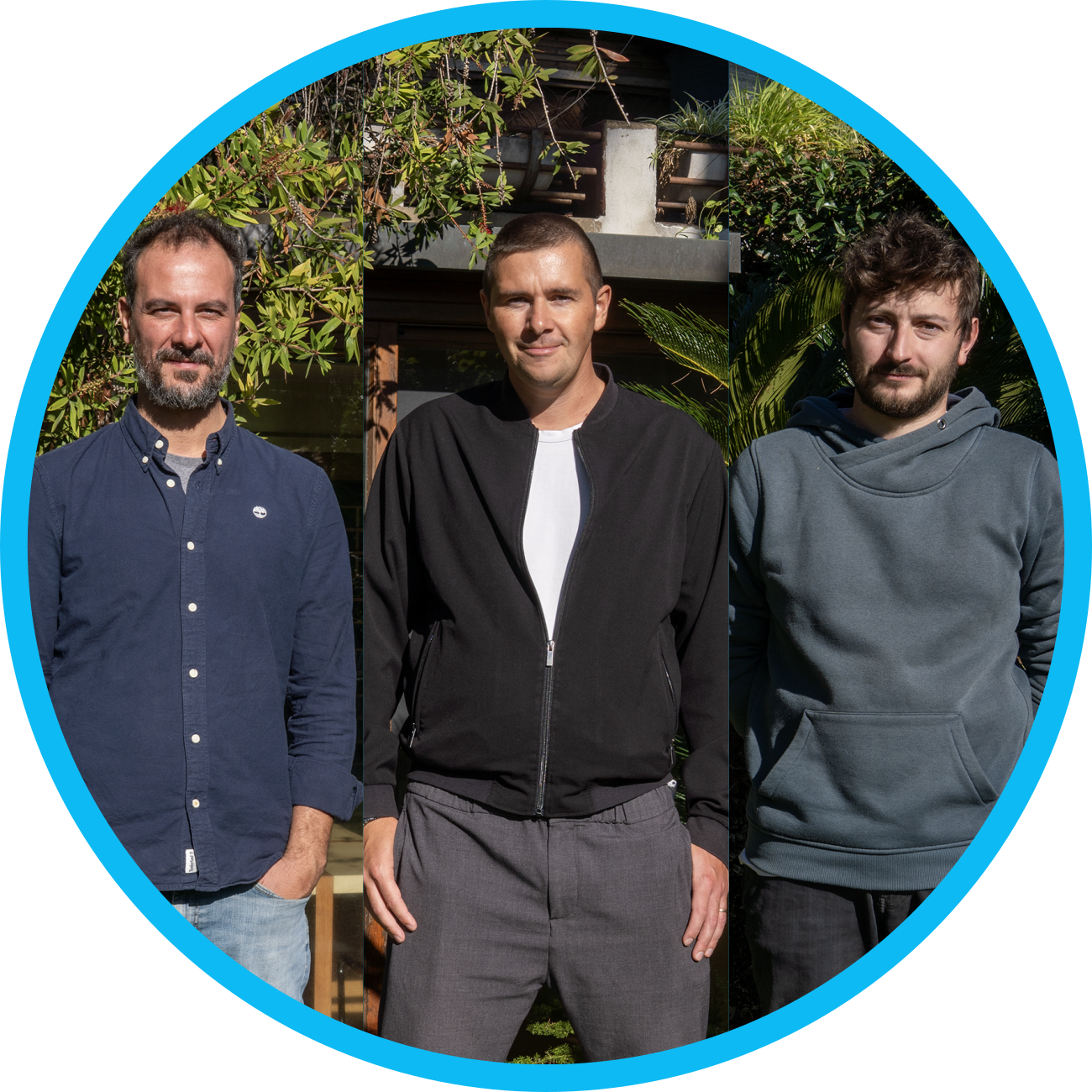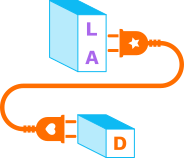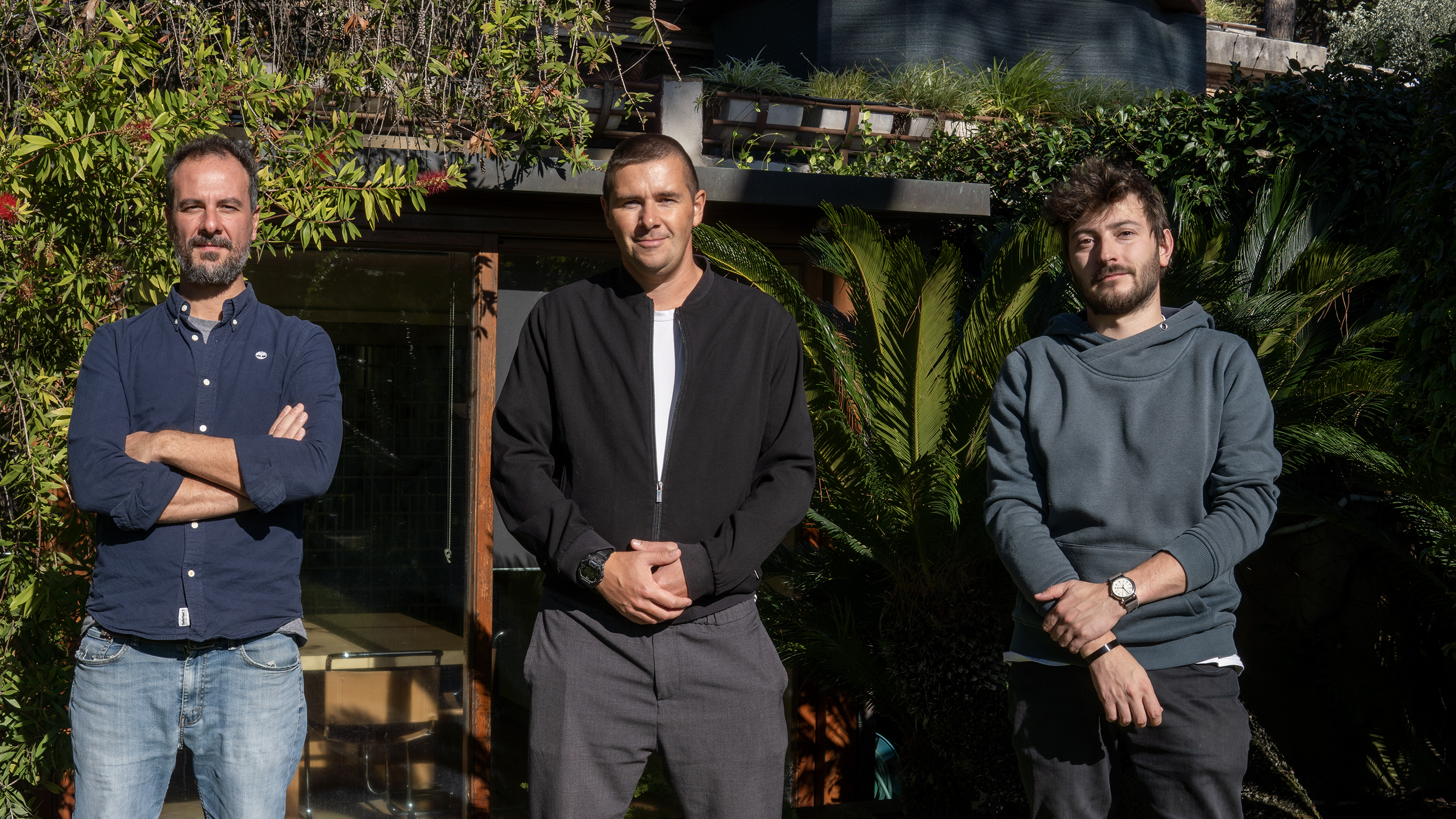Linux Audio Development (LAD)
n-Track
Linux Audio developer interview with Andrea, Matt, and Gabriele from n-Track
This interview was conducted by Amadeus Paulussen in 2025.

Dear Andrea, Matt, and Gabriele,
First, let me introduce you to the audience: Andrea Scuderi is an n-Track developer. Matt Thurtell is responsible for product and sound. And Gabriele Leva is also an n-Track developer.
Thank you so much for taking the time to do this interview! 🙌
I have to admit that I was not aware of your DAW, n-Track Studio, before we met a couple of months ago. But, when I first looked at it, I quickly got the impression that it sports a pretty impressive feature set. Might I ask how long you have been on the market with n-Track Studio?
We first released n-Track in 1995, before most people knew what a DAW was! Back then the whole idea of affordable multitrack recording on a home computer was still new, so the early years were spent focusing on getting the core recording and editing experience right. Over time we’ve added lots of features, but the guiding idea has always been fairly consistent: make reliable tools that let people have fun creating music without the software getting in the way.
How do you position n-Track Studio among other DAWs, such as Ardour, Bitwig Studio, Cubase, FL Studio, Live, Logic, Pro Tools, Reaper, Reason, Renoise, Studio One or Waveform?
We aim to sit between the highly specialized, often costly studio tools and the very simplistic mobile/entry-level offerings. Practically, that means a DAW that’s capable of professional tasks but remains approachable and predictable for people who need to record, edit, and mix without spending months learning the interface. We try to be useful in real workflows—tracking bands, creating arrangements, and finishing mixes—more than trying to be fashionable and chase every trend.
Do you ever collaborate with other DAW vendors?
I can’t think of any instance of that, besides implementing standards such as DAWproject, CLAP, VST, etc.
Nowadays, n-Track Studio is available on Windows, macOS, Linux, iOS, and Android, which is impressive. Could you please tell us what your development stack looks like to support such a wide variety of platforms?
The first experiments we did with multitrack recording back in 1995 were actually on Linux. The Linux audio drivers were not very mature back then, so we switched to Windows. A few months later, n-Track was first released as a Windows application. We then gradually ported to Mac, iOS, and then Android and recently we came full circle with the Linux version.
n-Track is mostly C++ with a proprietary UI layer that maps to the native low-level OS layers on most platforms. On Linux we mostly write directly to the GPU; we use GTK only for file requesters.
We love the Linux development environment and were surprised by how well n-Track turned out to run on Linux.
Low-latency audio works very well and the app looks and performs great, in some areas better than other platforms.
Could you also please tell us a little about your company structure?
We’re a small team of 5, musicians and engineers. The small size keeps communication direct. We use a development process loosely based on Scrum. We work from home most of the time, but we also regularly get together at the office.
Which plugin standards does n-Track Studio support, and are there some you prefer over others?
We support CLAP, AU (on Mac and iOS), VST2 and VST3. We have a love-hate relationship with VST3 as it sometimes makes it very difficult to implement things that one would think should be easy. AU is necessary on Apple (on iOS there is no real alternative).
What are your thoughts on CLAP?
We adopted CLAP last year in n-Track Studio 10.2. We like the openness of CLAP and the fact that it supports most of the features that VST3 does without all the complexity (like having to have code split between controller and processor and to use messages to talk between them), although so far it hasn’t been completely free of plugin compatibility issues that we’ve seen every now and then as well with other plugin standards.
What do you think of GPU Audio? Do you think it has a future?
I think the use cases for GPU audio are somewhat limited, though the idea of offloading certain DSP tasks to GPUs is interesting. Supporting that properly across all the platforms that n-Track supports would currently be quite difficult, though, so we don’t currently have plans for GPU audio as of now.
I remember suggesting that you put n-Track Studio on Flathub, and you did so within two weeks. What are your thoughts on distributing Linux apps?
Yes, thanks for the heads-up! For software developers, Flathub and Snap solve the issue of having to do builds for every distribution, and that’s great. The main downside that I see is that downloads and installed footprints are considerably bigger than native packages (e.g., .deb).
We haven’t noticed any performance penalty from the containerization of the app.
I think it might have been a bit more than two weeks though (!), getting n-Track on Flathub was an involved process, the most challenging aspect of which was working with the sandboxing permission limitations to access files, folders, audio, and graphics.
Do you know how your user base is distributed across the various platforms you support?
The largest number of casual users are definitely mobile; desktop users are typically more power users.
The feedback that we get from mobile users is sometimes frustratingly short, possibly because typing on phones is a bit inconvenient, while on desktop we usually get more coherent and actionable feedback.
As you would expect, we have more Windows than Mac users and more users on Android than on iOS.
We’ve officially launched on Linux only a few months ago, so that’s where currently we have the least amount of users, but we’re seeing some nice growth there.
Is it challenging for you to be visible in the crowded audio market? What measures do you take to reach potential users?
We don’t have a big marketing budget, so we try to have the quality of the product speak for itself.
I agree that users have a large number of options to choose from for which DAW to use. We don’t have much experience with other markets, so I don’t know if this one is particularly crowded or if most markets are like this.
I think that working on audio software is generally perceived as a cool activity, so that might be a factor. It’s certainly a big reason why we started n-Track; messing with computers and with audio was the convergence of two passions most of us have always had.
Of the platforms you support with n-Track Studio, are there any that require more development or support effort than others?
I don’t think there’s a platform that requires more development than others. From the support point of view, Android is the platform that generates the largest amount of support because of the very large range of hardware that it runs on, from very cheap phones built specifically for low-income countries to the latest flagships.
How do you perceive the development of Linux Audio? And, what do you think of technologies such as Wayland or PipeWire?
Developing with the ALSA API was not as straightforward as we hoped it would be; it’s an immense API that appears to want to do a lot of things, but it’s not well documented, so sometimes it wasn’t easy to understand what the proper way of doing things was.
We haven’t worked much with PulseAudio so we don’t know what improvements PipeWire brings. It looks like sharing audio devices between apps generally works well with PipeWire, although accessing ALSA directly is the scenario that we care most about for optimal latency.
Could you maybe highlight five unique selling points of n-Track Studio?
- Cross-platform: the same DAW across Linux, Windows, macOS, iOS and Android, so sessions travel with you.
- A complete suite of effects, instruments, and sounds to get you started
- Updates are frequent, but legacy projects open and remain usable in the latest version.
- Practical recording workflow: features and defaults aimed at people who track real instruments and live ensembles.
- Direct, engineer-led support: small team, quick responses, and engineers who read support threads and fix problems.
If you could change any of the rules around audio development, what would you change?
Hmm, I don’t know if there are many rules.
One trend in recent years that I don’t like is the excessive focus on “security”, but that’s not specific to audio apps. Many users are suspicious when an app accesses the device’s microphone.
Getting an app released on some platforms is becoming more and more like getting a mortgage for a house; you have to submit forms, sign stuff, request entitlements, and take various other bureaucratic steps.
A small number of bad actors has made life more difficult for the vast majority of developers with good intentions.
Sometimes I miss the days there were no digital signatures. As I mentioned above, even on Linux (Snap and Flatpak) accessing something as general purpose as the graphics drivers requires a specific entitlement that needs to be approved.
What do you think about the trend of integrating AI into music software? Does n-Track have a specific stance on this?
We started integrating AI tools into n-Track last year with stem separation. We plan to gradually add more AI-related features in the coming versions.
We like AI tools that make life easier for the user without replacing but augmenting the creative input.
Can you reveal anything about your future plans with n-Track Studio?
Our priority is reducing friction from the creative process, so that’s an area where we’re focusing: fewer clicks and taps, fewer places where users get lost and lose ideas, and more predictable cross-device workflows.

